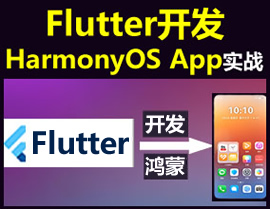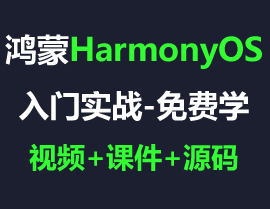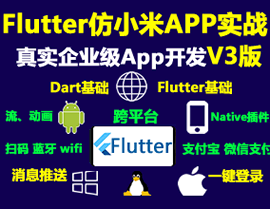Flutter通信协议插件maxwell_protocol的使用
Flutter通信协议插件maxwell_protocol的使用
本文将介绍如何在Flutter项目中使用maxwell_protocol插件。通过本教程,您将能够快速了解如何安装插件、配置项目,并通过示例代码实现基本功能。
安装插件
首先,在您的pubspec.yaml文件中添加maxwell_protocol依赖:
dependencies:
maxwell_protocol: ^1.0.0 # 请根据实际版本号替换然后运行以下命令以更新依赖项:
flutter pub get配置项目
确保您的项目支持必要的权限(如网络访问)。如果您的项目需要通过网络传输数据,请在AndroidManifest.xml(Android)或Info.plist(iOS)中添加适当的权限声明。
例如,在AndroidManifest.xml中添加网络权限:
<uses-permission android:name="android.permission.INTERNET"/>使用示例
以下是一个完整的示例,展示如何使用maxwell_protocol插件发送和接收数据。
示例代码
import 'package:flutter/material.dart';
import 'package:maxwell_protocol/maxwell_protocol.dart'; // 导入插件
void main() {
runApp(MyApp());
}
class MyApp extends StatelessWidget {
[@override](/user/override)
Widget build(BuildContext context) {
return MaterialApp(
home: MaxwellProtocolExample(),
);
}
}
class MaxwellProtocolExample extends StatefulWidget {
[@override](/user/override)
_MaxwellProtocolExampleState createState() => _MaxwellProtocolExampleState();
}
class _MaxwellProtocolExampleState extends State<MaxwellProtocolExample> {
String _response = ''; // 存储服务器响应
// 发送请求
Future<void> _sendRequest() async {
try {
// 创建协议实例
final protocol = MaxwellProtocol();
// 设置目标地址
protocol.targetUrl = 'https://example.com/api'; // 替换为实际服务器地址
// 发送请求并接收响应
final response = await protocol.sendRequest('{"action":"test"}'); // JSON格式数据
setState(() {
_response = response; // 更新UI
});
} catch (e) {
setState(() {
_response = 'Error: $e'; // 捕获异常
});
}
}
[@override](/user/override)
Widget build(BuildContext context) {
return Scaffold(
appBar: AppBar(
title: Text('Maxwell Protocol Example'),
),
body: Center(
child: Column(
mainAxisAlignment: MainAxisAlignment.center,
children: [
ElevatedButton(
onPressed: _sendRequest,
child: Text('Send Request'),
),
SizedBox(height: 20),
Text(
'Response:',
style: TextStyle(fontSize: 18),
),
SizedBox(height: 10),
Text(
_response,
style: TextStyle(fontSize: 16, color: Colors.blue),
),
],
),
),
);
}
}更多关于Flutter通信协议插件maxwell_protocol的使用的实战系列教程也可以访问 https://www.itying.com/category-92-b0.html
maxwell_protocol 是一个用于 Flutter 的通信协议插件,它可以帮助开发者更方便地处理网络通信、数据序列化和反序列化等任务。该插件通常用于定义和解析通信协议,使得客户端与服务器之间的数据交换更加规范和高效。
以下是如何在 Flutter 项目中使用 maxwell_protocol 插件的基本步骤:
1. 添加依赖
首先,你需要在 pubspec.yaml 文件中添加 maxwell_protocol 插件的依赖:
dependencies:
flutter:
sdk: flutter
maxwell_protocol: ^1.0.0 # 请使用最新的版本号然后运行 flutter pub get 来安装依赖。
2. 导入插件
在你的 Dart 文件中导入 maxwell_protocol 插件:
import 'package:maxwell_protocol/maxwell_protocol.dart';3. 定义协议
使用 maxwell_protocol 定义你的通信协议。你可以定义消息的结构、字段类型等。
class MyMessage extends ProtocolMessage {
String name;
int age;
List<String> hobbies;
MyMessage({required this.name, required this.age, required this.hobbies});
@override
Map<String, dynamic> toJson() {
return {
'name': name,
'age': age,
'hobbies': hobbies,
};
}
@override
void fromJson(Map<String, dynamic> json) {
name = json['name'];
age = json['age'];
hobbies = List<String>.from(json['hobbies']);
}
}4. 序列化与反序列化
使用 maxwell_protocol 提供的工具类进行消息的序列化和反序列化。
void main() {
// 创建一个消息实例
var message = MyMessage(name: 'Alice', age: 25, hobbies: ['reading', 'swimming']);
// 序列化为 JSON 字符串
String jsonString = ProtocolUtils.encode(message);
print('Serialized JSON: $jsonString');
// 反序列化为消息对象
MyMessage decodedMessage = ProtocolUtils.decode(jsonString, MyMessage.fromJson);
print('Deserialized Message: ${decodedMessage.name}, ${decodedMessage.age}, ${decodedMessage.hobbies}');
}5. 网络通信
在实际应用中,你可以将序列化后的消息通过 HTTP、WebSocket 或其他网络协议发送到服务器,并接收服务器的响应。
import 'package:http/http.dart' as http;
Future<void> sendMessage(MyMessage message) async {
String jsonString = ProtocolUtils.encode(message);
var response = await http.post(
Uri.parse('https://your-server.com/api'),
headers: {'Content-Type': 'application/json'},
body: jsonString,
);
if (response.statusCode == 200) {
// 处理服务器响应
MyMessage responseMessage = ProtocolUtils.decode(response.body, MyMessage.fromJson);
print('Response Message: ${responseMessage.name}');
} else {
print('Failed to send message');
}
}6. 错误处理
在实际开发中,网络通信可能会遇到各种错误,建议添加适当的错误处理逻辑。
try {
await sendMessage(message);
} catch (e) {
print('Error: $e');
}






